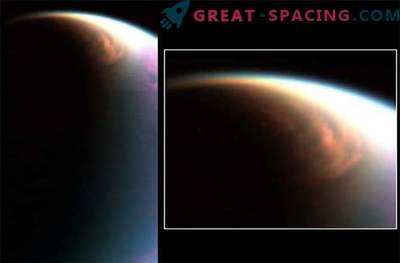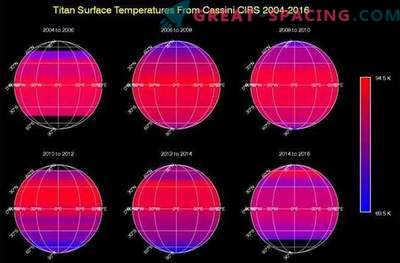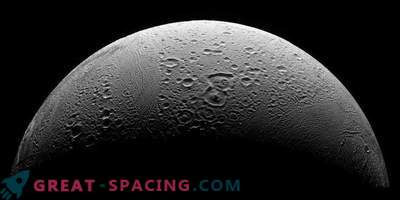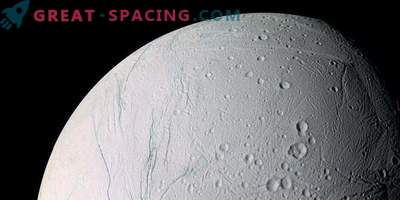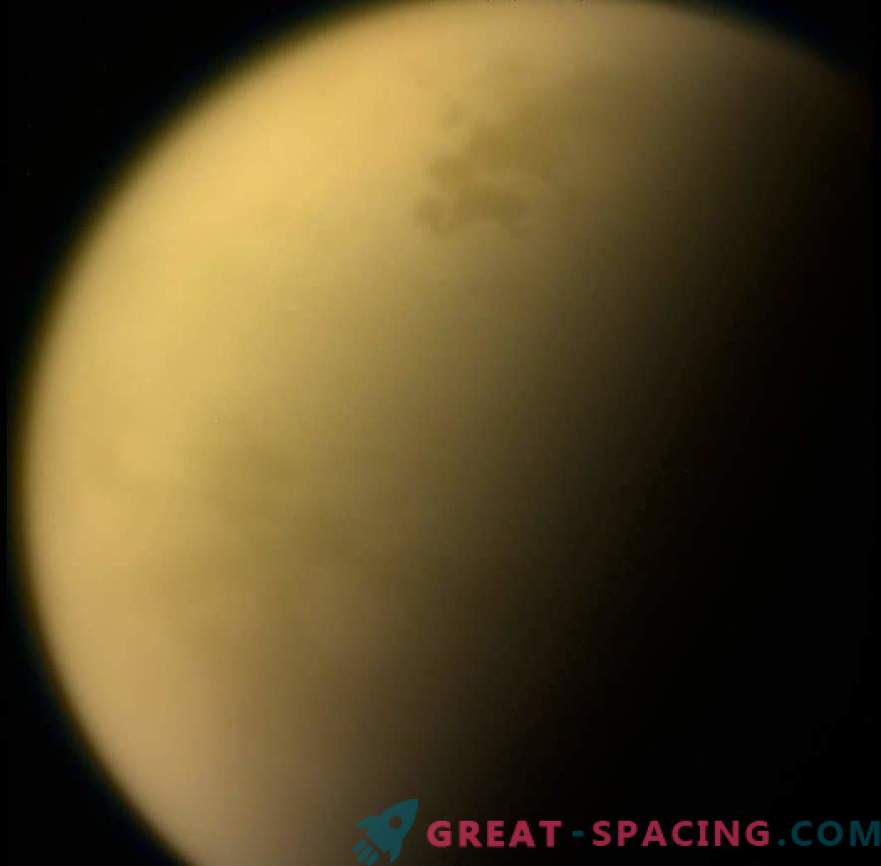
This is an overview of Saturn’s largest satellite, Titan, mined by the Cassini apparatus. Image sent before the ship hit the planet's atmosphere
The Cassini mission revealed evidence of the presence of toxic hybrid ice in a thin cloud above the south pole of Titan. It can only be seen in IR wavelengths using an IR spectrometer. It is located at an altitude of 160-210 km (higher than methane rains). Covers an area of 75-85 degrees south latitude.
Scientists have used laboratory experiments to detect a chemical mixture corresponding to the cloud signature. It turned out that we face a combination of a simple organic molecule of cyanide hydrogen and large ring benzene. It looks like they condense at the same time and form icy particles.
In the satellite’s stratosphere, the system sends a stream of warm gases from the summer hemisphere to the winter pole. Circulation changes direction when changing seasons, which causes the accumulation of clouds. Upon arrival, Cassini recorded them at the north pole, and at the end of the mission - at the south.
The new cloud belongs to the high-altitude south polar type with a distinctive and strong chemical signature. It was recorded only in three observations of Titan from July to November 2015. Seasons on Titan cover 7 years, so they always arrived at the South Pole. The spectral signatures of ice did not converge with the spectra of individual chemical substances, so scientists used experiments to simultaneously condense gas mixtures. The ice chamber imitated the conditions of the Titan's stratosphere. At first they passed one gas before another. But the best result was achieved after hydrogen cyanide and benzene were simultaneously introduced into the chamber.
A similar example of simultaneous condensation was noticed in the 2005 review. Then everything was repeated near the North Pole 2 years after the winter solstice. The cloud was formed at an altitude of 150 km and had a different chemical composition: hydrogen cyanide and cyanoacetylene (one of the most complex organic molecules in the atmospheric layer of Titan).
The difference in composition can be explained by seasonal variations at the north and south poles. The northern cloud was found 2 years after the winter solstice, and the southern cloud - 2 years before the winter solstice.
One of the most important advantages of Cassini is the opportunity to fly past these points during the period of 13 years of work. The ship completed its mission on September 15, 2017.
